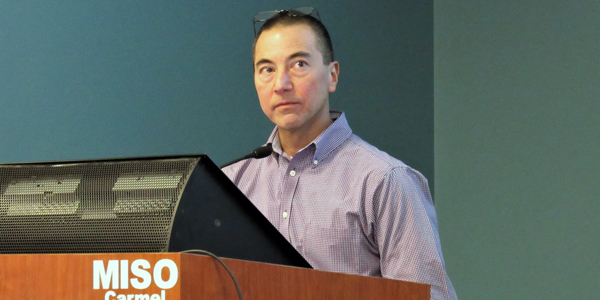By Amanda Durish Cook
CARMEL, Ind. — MISO is close to completing a plan that would give generators three years to submit a decision to retire after signaling their intention, but some stakeholders think the changes could allow unit owners to “game the system” for allocating transmission costs.
Joe Reddoch of MISO’s retirement planning group said the proposal — slated for a March filing with FERC — will close out a longtime recommendation from the Independent Market Monitor to allow generators to time their retirements according to Planning Resource Auction timelines.
Under the proposal, generation owners considering or planning a shutdown will still submit an Attachment Y notice to MISO, but the RTO will now treat all such notices as a request for suspension. Owners would no longer have to decide between a permanent retirement and a temporary shutdown with an estimated return-to-service date.
Instead, they would have three full planning years to prepare a return to service or decide to make the suspension permanent, providing additional time to decide whether to participate in the capacity auction. Suspended generators would lose interconnection service after three planning years if they don’t resume operations.
“By removing the return date [requirement], we can actually consider them in our planning processes,” Reddoch said during a Jan. 17 Planning Advisory Committee meeting.
Reddoch said MISO plans to continue its practice of passing pro rata transmission upgrade costs needed to maintain baseline reliability to unit owners who rescind their decision to retire.
Wind on the Wires’ Natalie McIntire pointed out that unit owners cause unnecessary costs for new interconnection customers by deciding to suspend and then come back online after an interconnection customer has shouldered the entire cost of interconnecting to make up for the lost generation.
“We have concerns about this,” McIntire said. “This treatment sort of creates an opportunity to game the system.”
“They could play games right now, but they don’t. They’re simply looking at the viability of their assets,” Reddoch said. “Right now, we create a false sense of security by modeling their return date when most of them never return.”
Reddoch said the proposal will not require changes to the planning process, as planning models already assume all retiring and formerly suspended units will be offline within 36 months. MISO last year deferred the proposal while it looked into possible modeling implications stemming from the change. (See MISO Defers Retirement Process Changes.)
MISO Director of Planning Jeff Webb said the plan improves the auction because owners uncertain about retiring a generator can still choose to participate in auctions, but the RTO’s Interconnection Planning Task Force could still explore the possibility that interconnection customers could be left holding the tab on an ultimately ineffectual network upgrade.
Other stakeholders said generation owners could potentially game the system by vacillating in and out of three-year suspensions. Reddoch pointed out that MISO’s Tariff limits total suspension times to three years in a five-year period.




